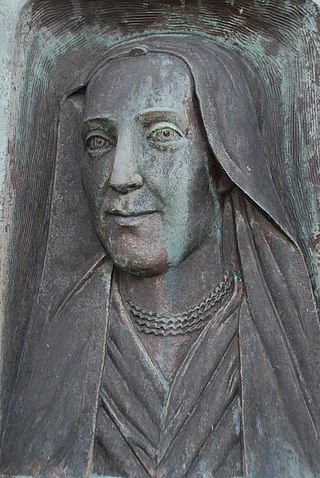
The history of Greenland is a history of life under extreme Arctic conditions: currently, an ice sheet covers about eighty percent of the island, restricting human activity largely to the coasts. The first humans are thought to have arrived in Greenland around 2500 BCE. Their descendants apparently died out and were succeeded by several other groups migrating from continental North America. There has been no evidence discovered that Greenland was known to Norsemen until the ninth century CE, when Norse Icelandic explorers settled on its southwestern coast. The ancestors of the Greenlandic Inuit who live there today appear to have migrated there later, around the year 1200, from northwestern Greenland.

Denmark and the former real union of Denmark–Norway had a colonial empire from the 17th through the 20th centuries, large portions of which were found in the Americas. Denmark and Norway in one form or another also maintained land claims in Greenland since the 13th century, the former up through the twenty-first century.

Erik Thorvaldsson, known as Erik the Red, was a Norse explorer, described in medieval and Icelandic saga sources as having founded the first European settlement in Greenland. Erik most likely earned the epithet "the Red" due to the color of his hair and beard. According to Icelandic sagas, Erik was born in the Jæren district of Rogaland, Norway, as the son of Thorvald Asvaldsson; to which Thorvald would later be banished from Norway, and would sail west to Iceland with Erik and his family. During Erik's life in Iceland, he married Þjódhild Jorundsdottir and would have four children, with one of Erik's sons being the well-known Icelandic explorer Leif Erikson. Around the year of 982, Erik was exiled from Iceland for three years, during which time he explored Greenland, eventually culminating in his founding of the first successful European settlement on the island. Erik would later die there around 1003 CE during a winter epidemic.

Hans Poulsen Egede was a Dano-Norwegian Lutheran missionary who launched mission efforts to Greenland, which led him to be styled the Apostle of Greenland. He established a successful mission among the Inuit and is credited with revitalizing Dano-Norwegian interest in the island after contact had been broken for about 300 years. He founded Greenland's capital Godthåb, now known as Nuuk.

Eric Magnusson was the King of Norway from 1280 until 1299.

The Treaty of Kiel or Peace of Kiel was concluded between the United Kingdom of Great Britain and Ireland and the Kingdom of Sweden on one side and the Kingdoms of Denmark and Norway on the other side on 14 January 1814 in Kiel. It ended the hostilities between the parties in the ongoing Napoleonic Wars, where the United Kingdom and Sweden were part of the anti-French camp while Denmark–Norway was allied to France.

Peder Ludvik Kolstad was a Norwegian politician from the Agrarian Party. He was the 19th prime minister of Norway from 1931 until his death in 1932.

Clavering Island is a large island in eastern Greenland off Gael Hamke Bay, to the south of Wollaston Foreland.

Otto Fabricius was a Danish missionary, naturalist, ethnographer, and explorer of Greenland.
Gustav Smedal was a Norwegian jurist and irredentist activist.

The Quisling regime, or Quisling government are common names used to refer to the fascist collaboration government led by Vidkun Quisling in German-occupied Norway during the Second World War. The official name of the regime from 1 February 1942 until its dissolution in May 1945 was Den nasjonale regjering. Actual executive power was retained by the Reichskommissariat Norwegen, headed by Josef Terboven.

Gertrud Rask was the first wife of the Danish-Norwegian missionary to Greenland Hans Egede and was the mother of the missionary and translator Paul Egede.

Eli Birgit "Ella" Anker was a Norwegian magazine journalist, newspaper correspondent, playwright, feminist, and pamphleteer.
Major Claus Enevold Paarss was a Danish military officer and official. Retired from service, he was appointed governor of Greenland by King Frederick IV between 1728 and 1730.
The Bergen Greenland Company or Bergen Company (Bergenkompagniet) was a Dano-Norwegian private corporation charged with founding and administering Danish-Norwegian colonies and trade in Greenland, as well as searching for any survivors from the former Norse settlements on the island. It operated from 1721 until its bankruptcy in 1727. Although the Bergen Company failed as a concern and both its settlements were destroyed and abandoned, it was ultimately successful in re-establishing sovereignty over Greenland.
Buskø was a small Norwegian sealer, seized by the U.S. Coast Guard in East Greenland in September 1941, before U.S. entry into the war, while bringing supplies and rotating personnel for Norwegian hunting stations. This caused an uproar in the American press when she was towed to Boston as a prize, frequently but incorrectly called the first American capture of an enemy surface vessel in the war. President Franklin D. Roosevelt had frequently asserted that Germany would try to gain a foothold in Greenland, and the way this was presented seems to bear him out. It was a notable early initiative in the North Atlantic weather war.

King Christian X Land is an area of northeastern Greenland.

Finn Devold was a Norwegian Arctic explorer, marine biologist and meteorologist. His father was parish priest Harald Ophus Devold. Together with his brother Hallvard Devold, Finn shared an interest in the Arctic areas and in the expansion of Norwegian sovereignty across Greenland.

The Battle of Jabobshavn also referred to as the Battle of Ilulissat, was a battle between Danish and Dutch ships over the control of Ilulissat on 6 June 1739. It has been the only naval battle fought over the rights of Greenland. The battle is sometimes also mentioned as the Battle of Maklykout, referring to the Dutch name of the trading post.


















